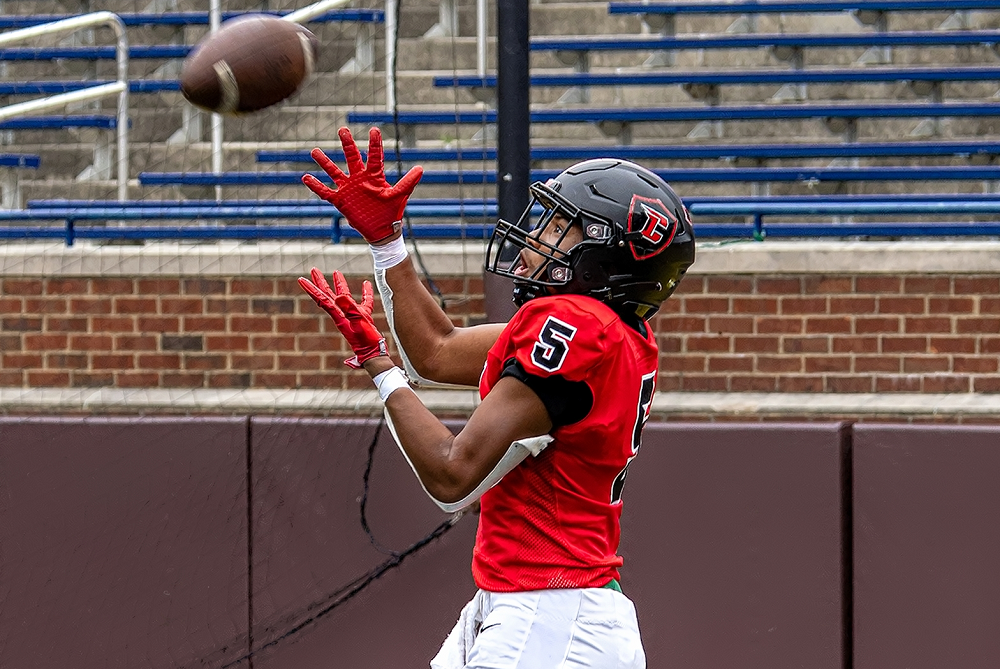
#TBT: Watervliet, Coloma Make it 100
August 24, 2017
By Geoff Kimmerly
Second Half editor
On a cloudy August night in 2009, with overcast skies similar to what many across Michigan are seeing this afternoon, Coloma and Watervliet played the 100th game of what continues to be one of the longest series in MHSAA football history.
Coloma won that 2009 season opener 21-12, at the time its 10th straight victory over the rival Panthers. But Watervliet ended the streak the following fall, winning 34-6 in 2010, and has won all four meetings since – the teams didn’t play each other from 2012-14.
Watervliet leads the series 66-34-6 and won last year’s game 66-26. Their matchup ranks 13th in MHSAA history for most games played between two teams. Watervliet hosts Coloma in Week 9 this season, Oct. 20.
PHOTO: Watervliet helmet signs line one end of the field prior to the team’s game against Coloma in 2009. (Photo by John Johnson.)

Be the Referee: Football Rules Differences
By
Sam Davis
MHSAA Director of Officials
August 23, 2023
Be The Referee is a series of short messages designed to help educate people on the rules of different sports, to help them better understand the art of officiating, and to recruit officials.
Below is this week's segment – Football Rules Differences - Listen
The first week of the high school football season is always exciting … and sometimes confusing. Here are some – not all – differences between the high school game and what you see on Saturdays and Sundays.
In high school, there is no such thing as an uncatchable ball when judging pass interference. It is a penalty if there is illegal contact, whether the ball is catchable or not.
In overtime, high school teams start with the ball at the 10-year line – not the 25 like in college. And in high school overtime, you are only able to get a first down via penalty. And, at no time is a high school team required to go for two points.
And on extra point plays, if the defense gains possession, the try is over. The defense cannot return the ball for two points.

